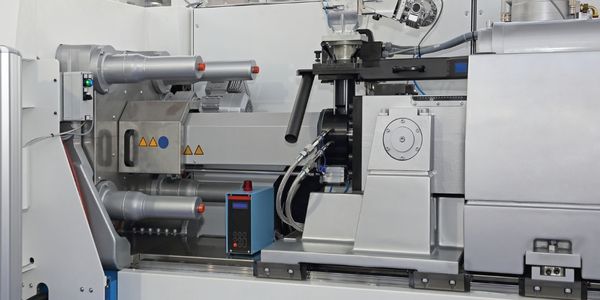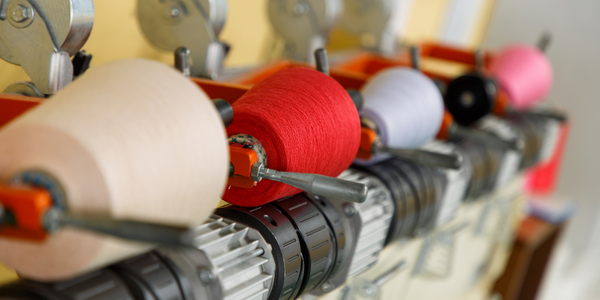Technology Category
- Automation & Control - Human Machine Interface (HMI)
- Sensors - Air Pollution Sensors
Applicable Industries
- Apparel
- Plastics
About The Customer
The customer in this case study is BRITA, a renowned company specializing in water filtration products. BRITA is committed to sustainability and is known for its efforts to reduce plastic waste and promote the use of reusable products. The company wanted to raise awareness about the environmental impact of single-use plastic water bottles and encourage people to make more sustainable choices. To achieve this, BRITA sought to leverage the power of fashion and celebrity influence to create a compelling campaign that would resonate with a wide audience and inspire action.
The Challenge
The case study revolves around the challenge of single-use plastic water bottle pollution, a growing environmental concern. BRITA, a company known for its water filtration products, wanted to highlight this issue while also promoting their sustainable credentials. The company aimed to create a platform that would not only raise awareness about the problem but also encourage people to make more sustainable choices. The challenge was to effectively communicate this message to the public and inspire action. To achieve this, BRITA needed a creative and impactful campaign that would resonate with a wide audience and generate significant engagement.
The Solution
BRITA partnered with UK fashion designer Henry Holland to create a limited-edition range of slogan t-shirts made from recycled plastic waste. The t-shirts, featuring powerful slogans such as 'Don’t be a Waster' and 'Single-Use Plastic is Never Fantastic', were sold on Henry Holland’s website, with all profits donated to the Marine Conservation Society. To further support the campaign, environmental philanthropist and actress Lily Cole was employed to encourage people to switch to reusable bottles. The campaign was launched with a press briefing featuring a video content with the designer and model, and a panel discussion on 'The problem with plastic'. The event was live-streamed via a popular podcast series, encouraging further conversation among a wider audience.
Operational Impact
Quantitative Benefit

Case Study missing?
Start adding your own!
Register with your work email and create a new case study profile for your business.
Related Case Studies.

Case Study
Fire Alarm System and Remote Monitoring Sytem
Fire alarm systems are essential in providing an early warning in the event of fire. They help to save lives and protect property whilst also fulfilling the needs of insurance companies and government departments.Fire alarm systems typically consist of several inter-linked components, such as smoke detectors, heat detector, carbon monoxide, manual call points, sounders, alarm and buzzer. The fire alarm system should give immediate information in order to prevent the fire spread and protect live and property.To get maximum protection a shoe manufacturer in Indonesia opted for a new fire alarm system to monitor 13 production sites spread over 160 hectars. Although the company had an existing fire alarm system, it could not be monitored remotely.It was essential that the new system would be able to be monitored from a central control room. It needed to be able to connect to the existing smoke detector and manual call point. Information should be easily collected and passed on to the Supervisory Control and Data Acquisition (SCADA) system. Furthermore, the system should have several features such as alarm management, auto reporting, being connected to many client computers without additional cost, and run 24/7 without fails. The company also needed a system which could be implemented without changing the architecture of the existing fire alarm system.

Case Study
IoT Applications and Upgrades in Textile Plant
At any given time, the textile company’s manufacturing facility has up to 2,000 textile carts in use. These carts are pushed from room to room, carrying materials or semi-finished products. Previously, a paper with a hand-written description was attached to each cart. This traditional method of processing made product tracking extremely difficult. Additionally, making sure that every cart of materials or semi-finished products went to its correct processing work station was also a problem. Therefore, the company desired an intelligent solution for tracking assets at their factories. They also wanted a solution that would help them collect process data so they could improve their manufacturing efficiency.

Case Study
Plastic Spoons Case study: Injection Moulding
In order to meet customer expectations by supplying a wide variety of packaging units, from 36 to 1000 spoons per package, a new production and packaging line needed to be built. DeSter wanted to achieve higher production capacity, lower cycle time and a high degree of operator friendliness with this new production line.

Case Study
Retailer Uses RFID Scanner to Improve Efficiency
Patrizia Pepe wished to improve the logistics of their warehouse: accepting incoming goods from their production sites, movement of items throughout
the warehouse, and packaging of goods for distribution to the retail locations. They initially tried to use barcodes for this function. Because barcodes must be individually scanned within a line-of-sight, the acceptance of goods coming into the warehouse was too time consuming. Working with the University of Florence, Patrizia Pepe instituted a five-month pilot project beginning in August of 2009 to test the validity of an RFID solution. The pilot involved tagging of about 60,000 items for the second seasonal collection, and convinced the company to move forward with tagging all items.

Case Study
Monitoring and Controlling Automatic Mixing and Dispensing Machines
As technology advances, textile manufacturing has been transformed from a labor-intensive to a partially or fully automated industry. Automation is significant in all segments of textile production - from spinning to printing, and textile machinery manufacturers are constantly searching for new technologies and automation processes will increase the productivity of their machines. The color paste mixing and dispensing machine is an essential part of the printing and dyeing process. With the advantage of automatically computerized controls and database management, the system can significantly improve its dispensing precision, working efficiency and production quality as well as reducing material consumption.

Case Study
Boiler Control System for Plastic Manufacturing Applications
Factory automation applications must be equipped to handle and monitor the myriads of information from attached devices. For plastic manufacturing applications, the boiler control system plays a critical role by gathering and regulating information to ensure production is accurate and smooth. In this particular case, the customer combines eight subsystems that include power meters, water meters, alarm output, displays, and I/O status to be controlled by several intelligent controllers with Modbus RTU interface. The Modbus TCP protocol is used for this application due to the distance. System Requirements: • Modbus serial to Modbus TCP translation • Multiple slaves/masters support • Automatic Modbus TCP response time detection







